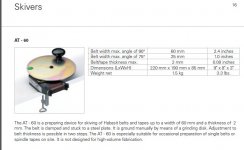c310pilot
Aluminum
- Joined
- Apr 7, 2009
- Location
- Richmond Virginia
I know this has been gone over but I still have yet to read about any tricks. The joint on the belt I removed from my machine before the complete tear down was perfect. I still can't find the joint. All the methods, examples I have seen thus far have a visible joint. After all the hard work I don't want the belt to be the weak point in the rebuild. I don't want to hear that tick as the seam passes over the pullys. I have ruinned two serpentine belts thus far and am frustrated at my inepptitude.
How can I make the perfect joint?
How can I make the perfect joint?











